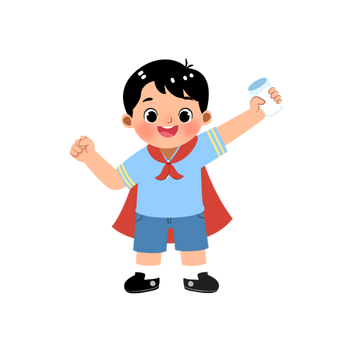In this article:

- Definition
- Signs and symptoms
- Causes
- Risk factors
- Treatment
- Lifestyle and living habits
Acute lower back pain is often caused by falls, while chronic ones are often observed in elderly people. However, the number of young people occupying deskbound or manual labor jobs who experience pain their lower back has seen an increase recently. In general, pain in the lower back, which usually does not involve serious conditions, is caused by poor posture and exceeding the endurance limit of the back and abdominal muscles.
Definition
What is lower back pain?
Lower back pain refers to discomfort that you feel in your lower back area, which consists of the vertebrae, intervertebral disc, spinal cord (containing nerves), muscles and tendons. Muscles in the back and abdomen help support the spine, and could experience aching if injuries to this section occur. The pain could either be acute, which lasts several days, or chronic which could last much longer.
Who is prone to suffering this problem?
It is quite a common condition. Nearly everyone would have experienced it at least once in their lifetime. You could prevent this condition from occurring by reducing its risk factors. Please consult a doctor for more information.
Signs and symptoms
What are the common signs and symptoms?
Symptoms will appear when your back is injured. You may experience a tingling or burning sensation, dull aches or sharp pain. The pain may be mild or so severe that you would not be able to move.
Depending on the cause of your back pain, it may also spread to your legs, hips or soles. Your feet may also weaken. These signs usually go away after a few days or weeks of treatment, while some chronic cases could require prolonged treatment.
You could be experiencing symptoms other than the aforementioned. If you are concerned about them, please consult a doctor to explore them in greater detail.
When do you need to see a doctor?
If you experience the above signs and symptoms, or have any questions and concerns, it would be best to speak to a doctor. These symptoms may vary across people, therefore it is always best to seek professional medical advice for an accurate diagnosis and proper treatment.
Causes
What are the causes?
An injury or accident such as a fall could cause acute pain in the lower back that lasts from 1 to 7 days. Chronic form of this pain typically lasts longer and can stretch up to 3 months or more.
Common causes include:
- Sudden turns or movements
- Obesity
- Lifting heavy objects with poor posture
- Weak lumbar and abdominal muscles
- Sitting too long
- Reaching beyond the body’s range
It could also occur as a result of other conditions, such as arthritis or fibromyalgia and serious conditions such as cancer, kidney diseases or hematologic disorders.
Risk factors
What factors increase the risk of developing this pain?
Anyone could experience back pain, even children and teenagers. Factors such as being overweight, lack of exercise, and improper lifting of heavy objects are often cited as causes of back pain, however studies on the actual risk factors are still not clear.
According to statistics, people with psychological problems such as depression and anxiety, are at a higher risk of experiencing this problem, yet the definitive reasons remain unknown.
Treatment
The information provided herein is not a substitute for any medical advice. ALWAYS consult with a doctor for more information.
How is it treated?
Treatment depends on the cause and severity of the condition.
If caused by an injury, the doctor may recommend using ice compression. Nonsteroidal anti-inflammatory drugs (NSAIDs) may also help relieve pain. Severe pain may require short-term use of more potent medicines which contain morphine. A doctor would prescribe muscle relaxants for muscle spasm symptoms.
However, it should be noted that all of the above medicines have side effects. NSAIDs can cause stomach aches, ulcers, rashes as well as liver and kidney problems. Muscle relaxants can cause drowsiness, dizziness or rashes.
Alternatively, physiotherapy may be a viable option to help relieve pain. This method is commonly used for those with chronic form of this back pain and known for its high success rates due to effective physical exercises for the waist and abdomen.
How is it diagnosed?
A thorough diagnosis is made from understanding your detailed medical history and telltale signs. Procedures such as X-ray or magnetic resonance imaging (MRI) may be performed if the doctor requires clearer images of your bones, nerves, discs or other organs.
The doctor may also perform a blood test to determine if the pain is caused by other conditions which share the same symptoms.
Lifestyle and living habits
Which living habits help you limit the progression of pain in the lower back?
Pain in the lower back could be prevented if you:
- Use prescription medication
- Actively lose weight from being overweight
- Practice stretching exercises and increase flexibility daily
- Maintain proper posture while sitting, walking or carrying objects
Maintaining good posture in everyday activities would help with this problem. Regular exercise also helps strengthen your back and abdominal muscles. If you are on painkillers, it would be best to keep track of the prescribed course and monitor the progress of you pain without them. Consult a doctor if you have persistent back pain or weakness in the legs. Lifestyle changes are also welcome in preventing back injuries from occurring. If you are immobile at your workstation, get into the habit of moving around periodically. If you are overweight, sign up for a fitness programme that would help you shed some weight. These minor lifestyle changes not only help prevent back problems, but reduce the risk of developing other health conditions.
If you are concerned about any red flags with your health, please consult a doctor for advice on the best treatment.
Hello Health Group does not provide medical advice, diagnosis or treatment.
[embed-health-tool-bmi]



















